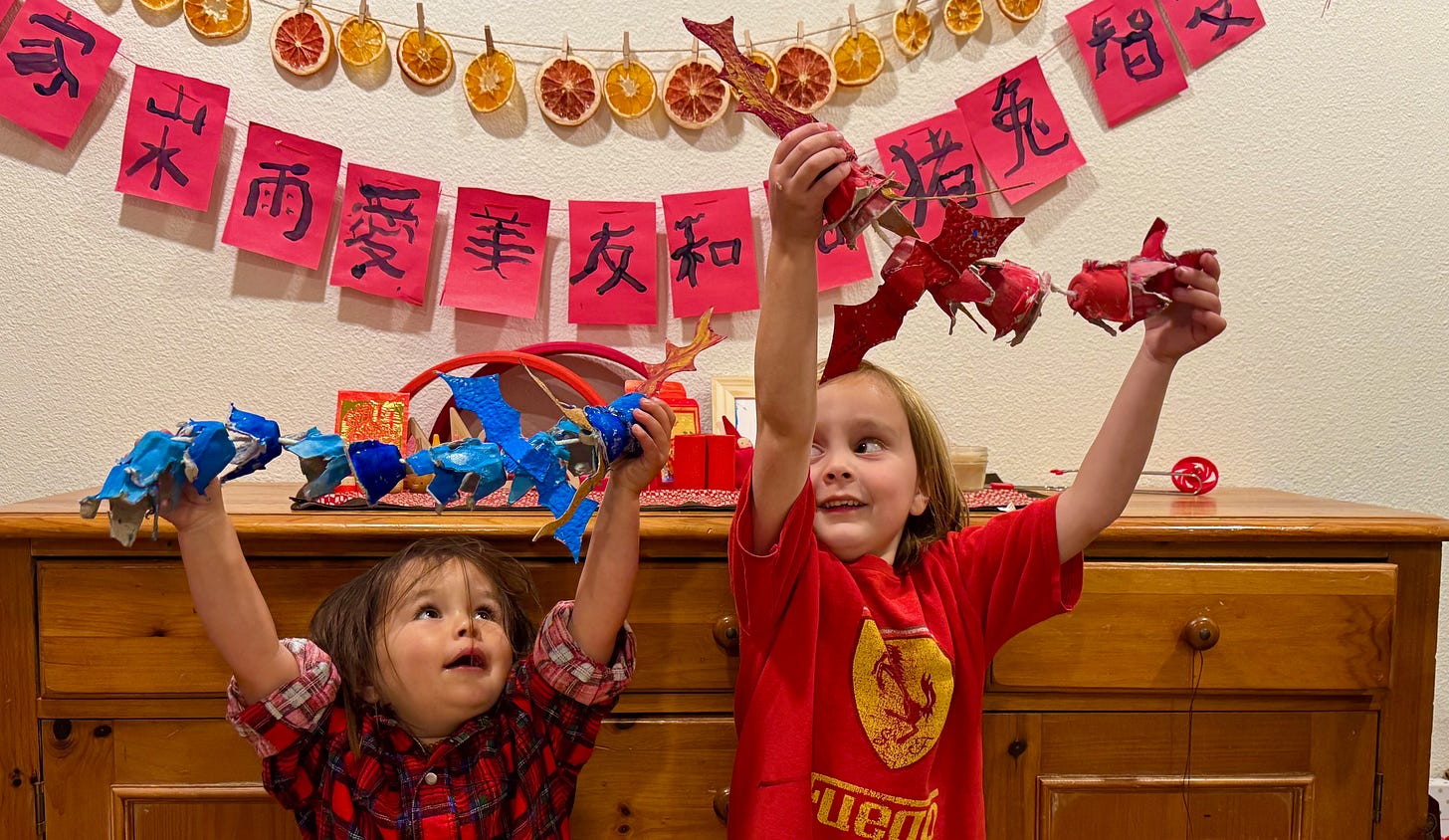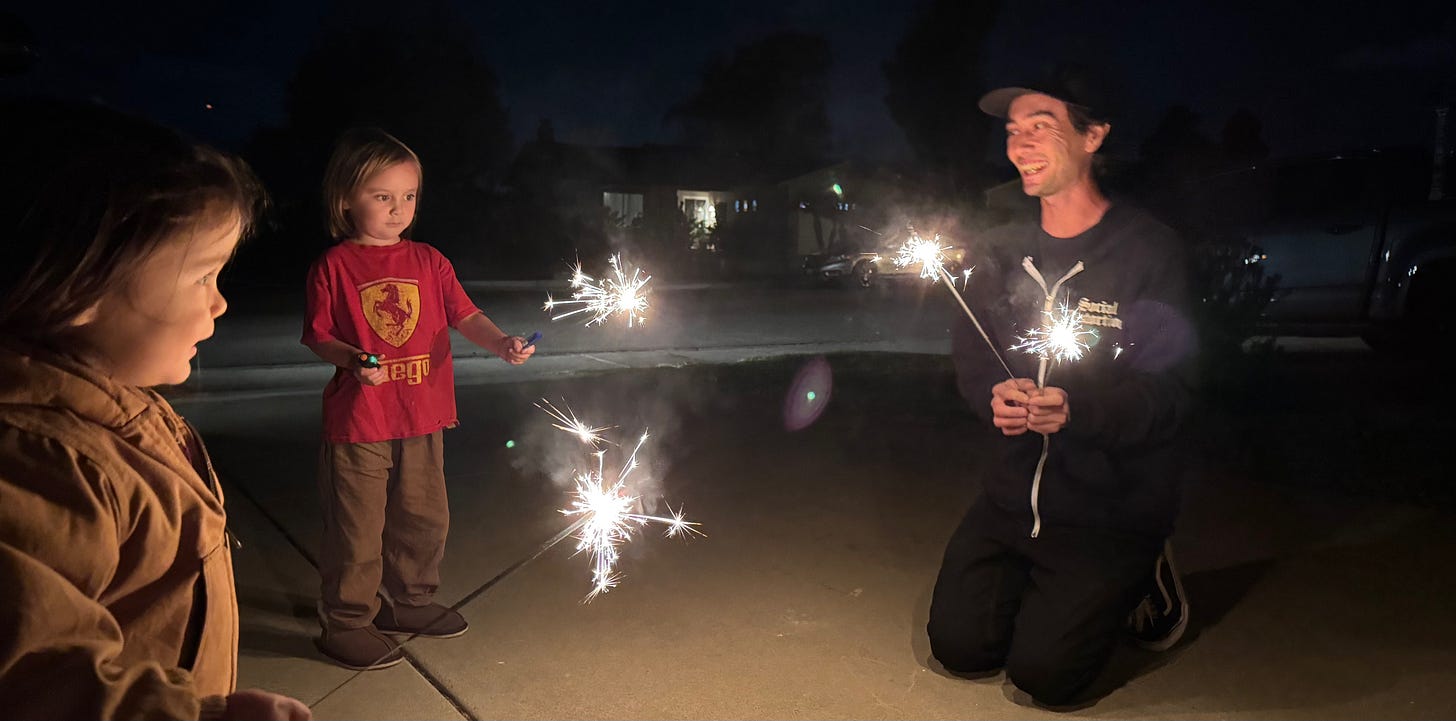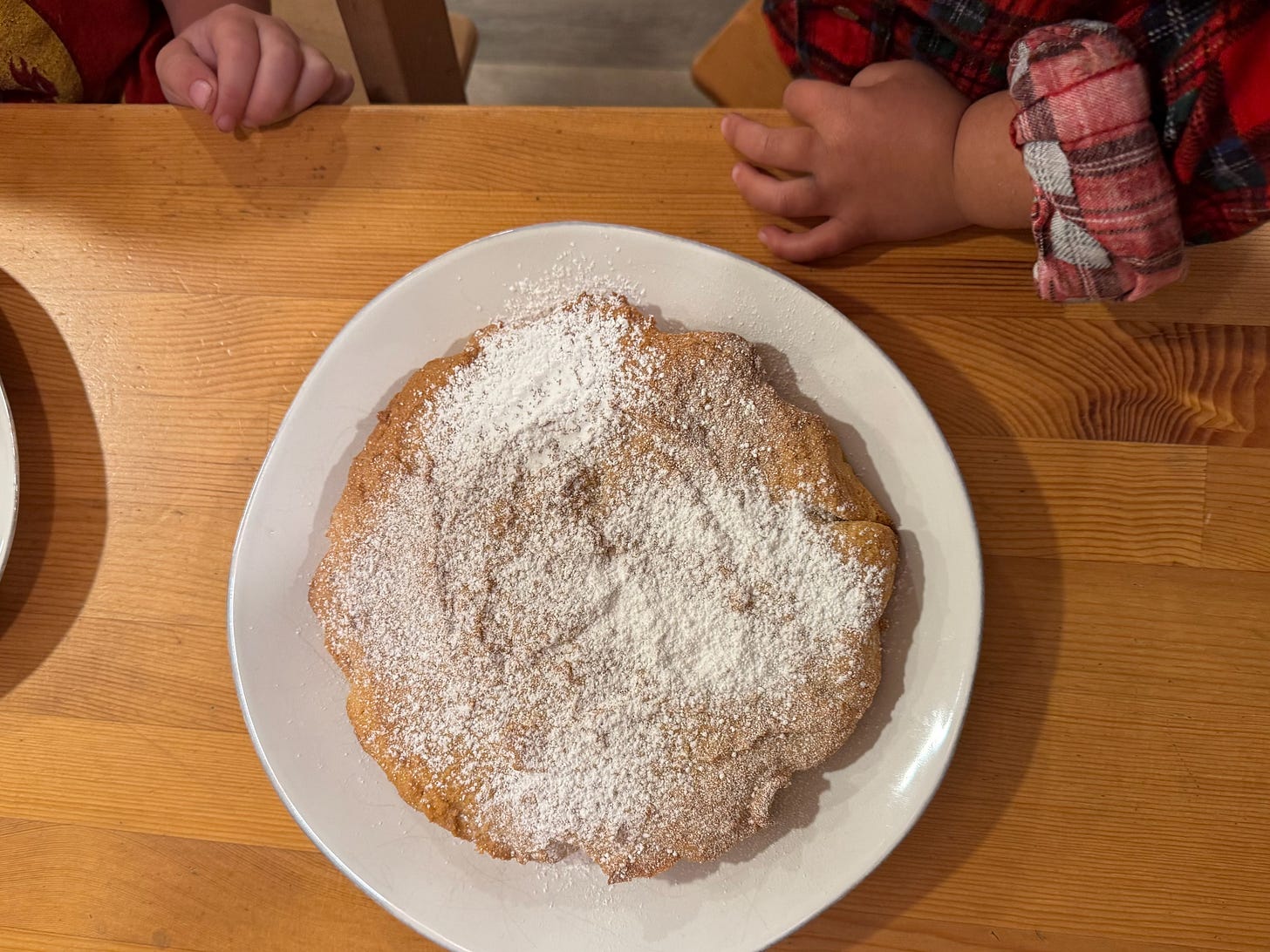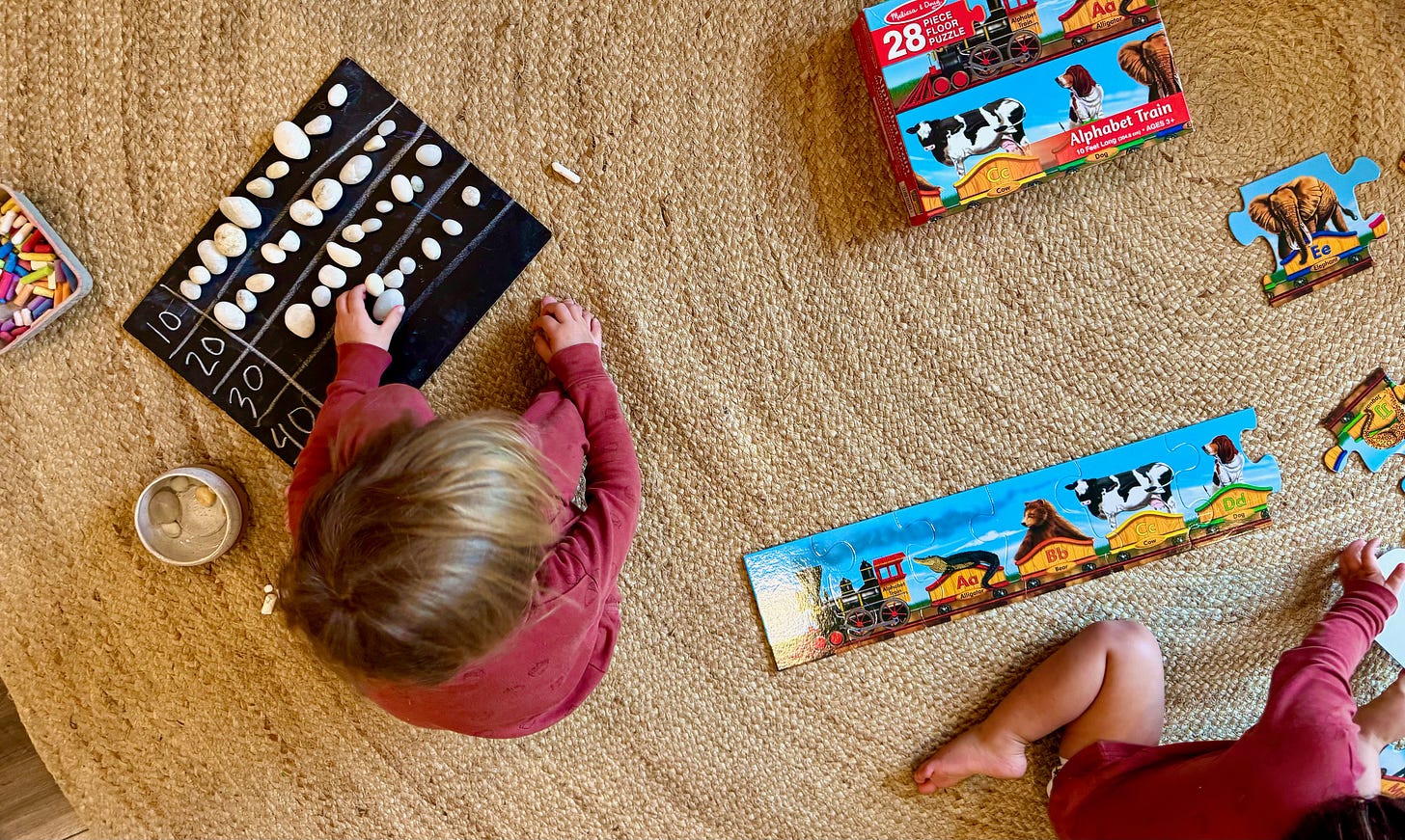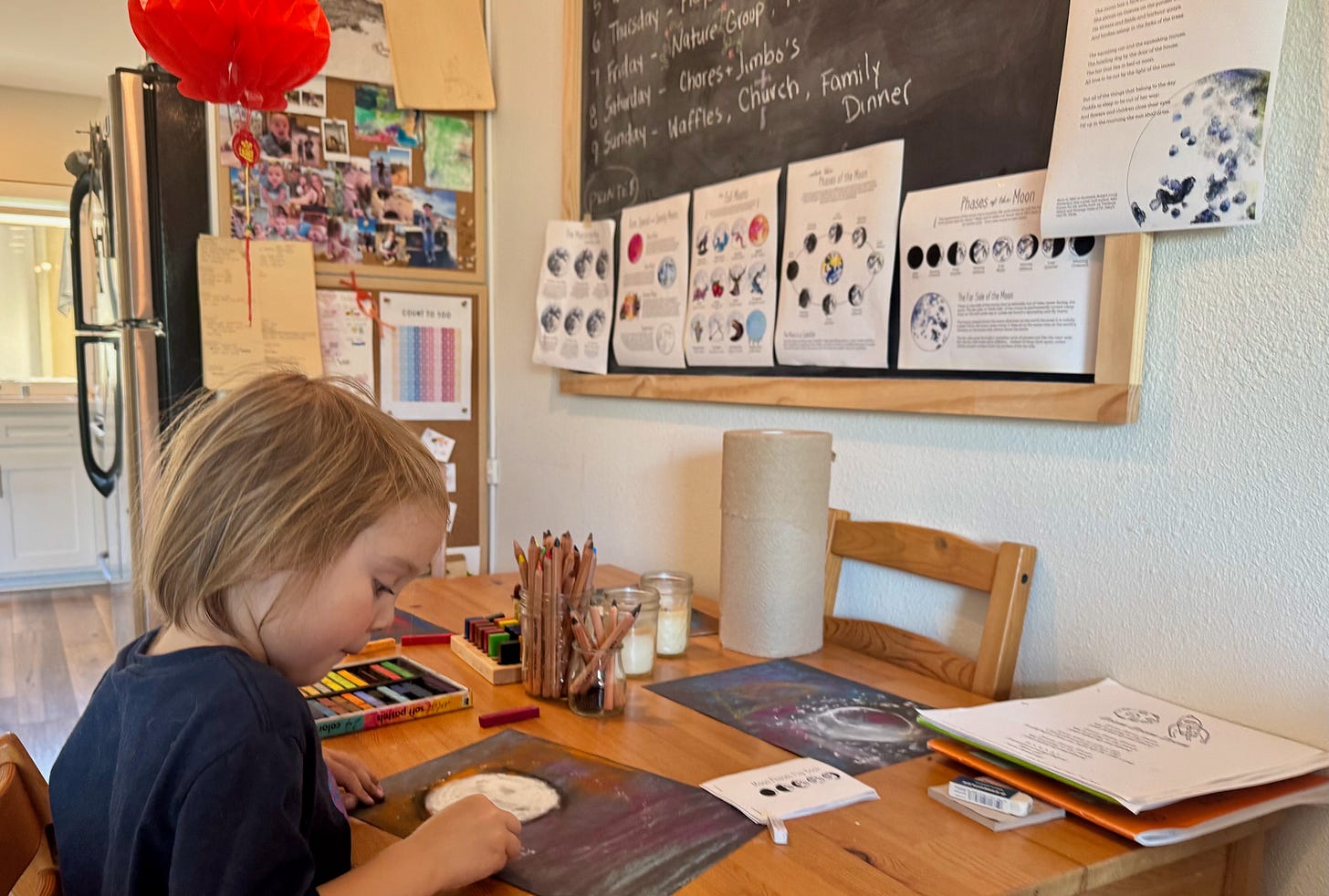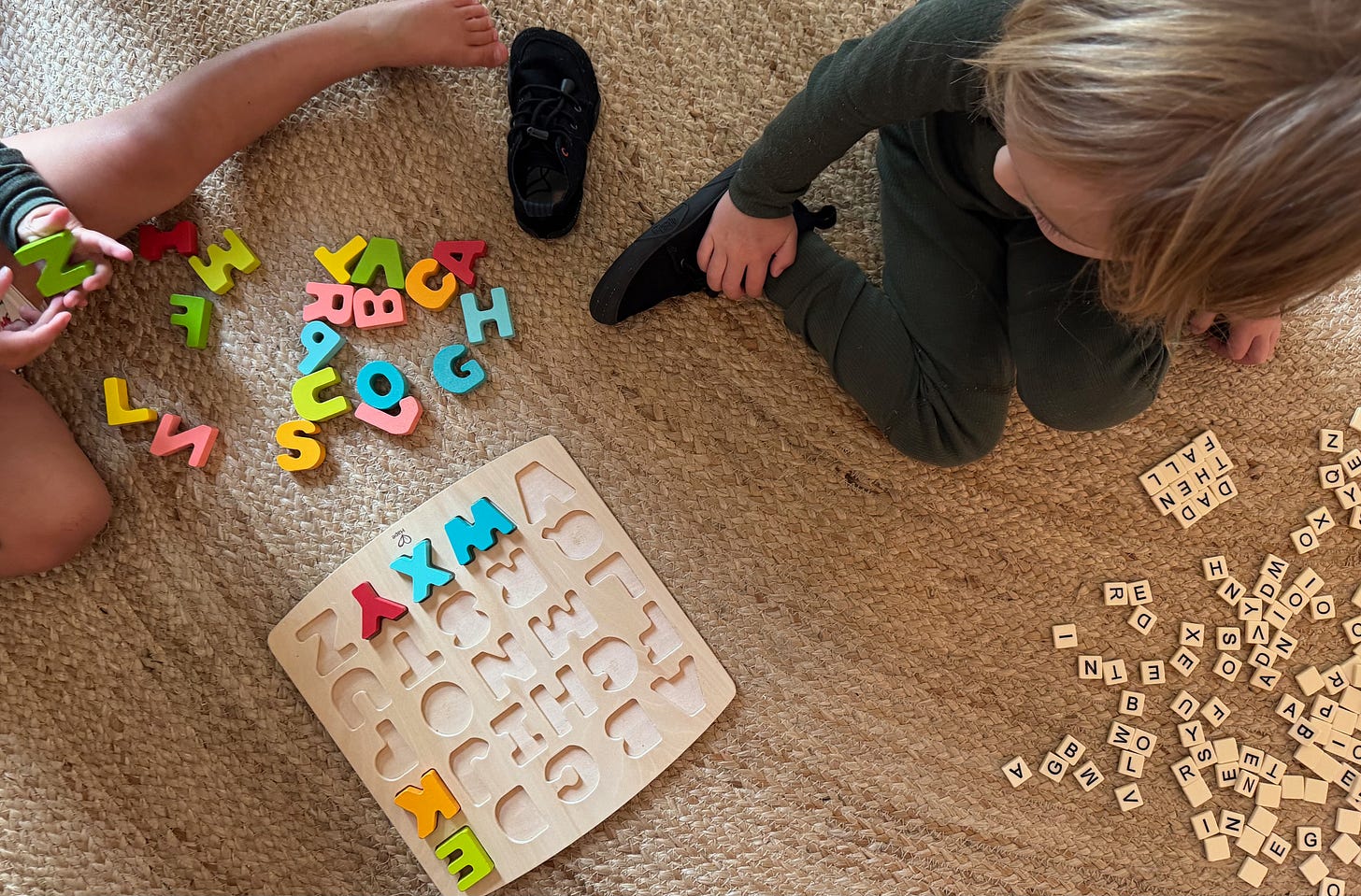We had so much fun studying the moon and celebrating Lunar New Year. Even though our family has Chinese ancestory, this is the first year we have celebrated “Chinese New Year”1 as a family. In one of our favorite new books, the Truth About Dragons by Julie Leung, a young biracial boy explores dragon lore of both European and Asian cultures through the stories of his two grandmothers. The story ends with his mother telling him, “Inside your heart is where the two forests meet. Both journeys are yours to take. Both worlds are yours to discover.” The message being that biracial kids do not have to choose one culture or another; they are blessed and enriched by both.
Pairing this celebration with a study of the moon made it extra special. Traditionally, Lunar New Year is a two week festival that begins on the new moon and ends on the full moon. During our moon study, we learned all about the moon and moon phases. It was a beautiful accompaniment to Lunar New Year!
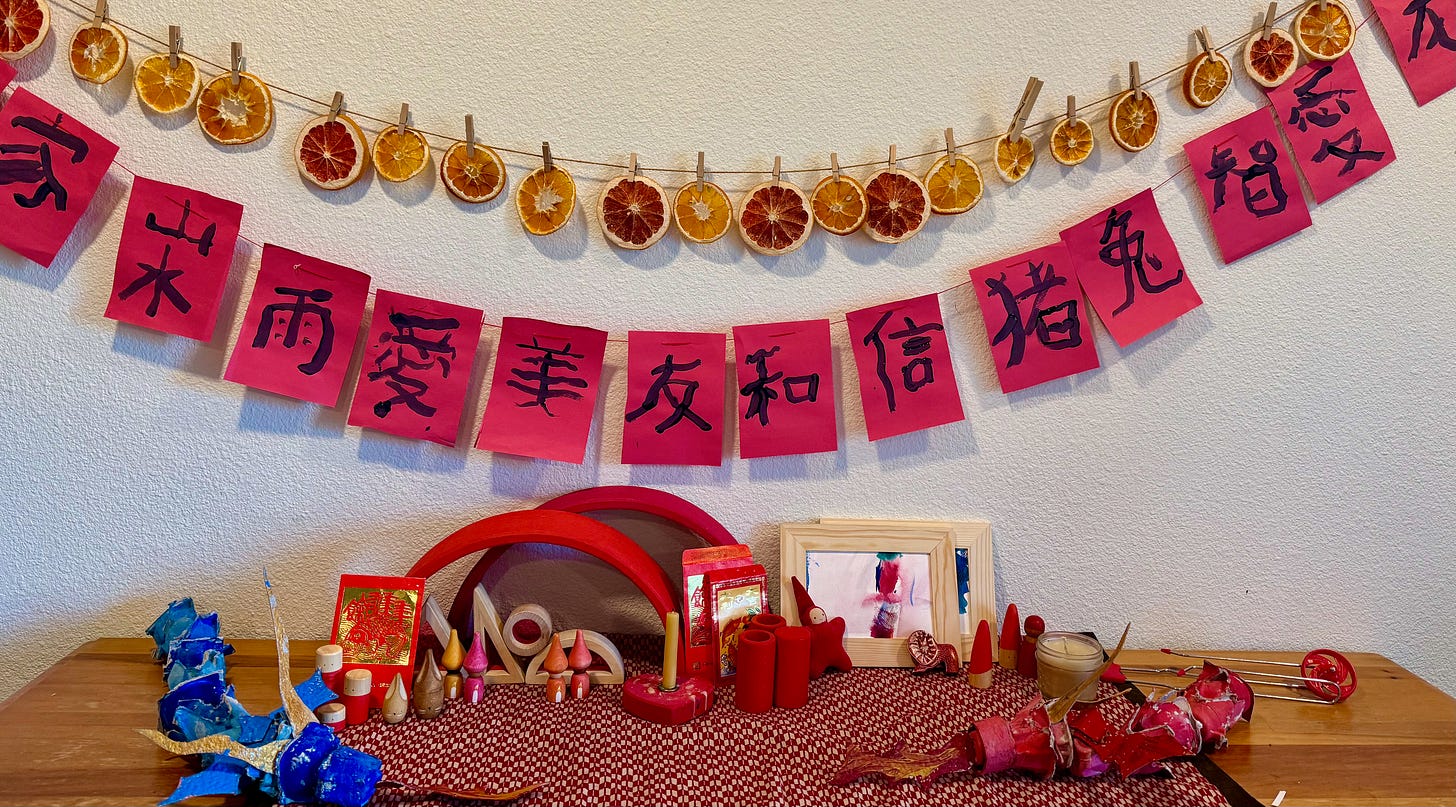
Language Arts
Fiction: The Truth About Dragons by Julie Leung, A Mooncake for Little Star by Grace Lin, Playing with Lanterns by Wang Yage, Kitten’s First Full Moon by Kevin Hanks, Max and the Tag-Along Moon by Floyd Cooper, Once in a Full Moon by Carolinda Goodman
Nonfiction: Bringing in the New Year by Grace Lin, Celebrating Chinese New Year by Eugenia Chu, Lunar New Year by Hannah Eliot, The Moon Book by Gail Gibbons, My First Book of Planets by Dr. Bruce Betts
The Oxherd Boy, in the words of the author Regina Linke, is grounded in the Three Harmonious Teachings of Buddhism, Taoism, and Confucianism, which are the foundation of classical Chinese education; we were gifted this beautiful book for Christmas and have loved reading it over and over again
Phonics: ch, sh, and th (focus stories in My First Nature Reader and spelling with bananagram Tiles)
Zoom, Zoom, Zoom Rhyme (to our own tune and hand motions)
I See the Moon by Oak Meadow Circle Time Songs
Traditional Chinese music
Poem: The Moon by Robert Louis Stevenson
Math
Math CGI Problem Solving - it is always fun to relate our problem-solving to what we are studying (i.e. the moon and Lunar New Year) while we work on adding, comparing, place value, multiplying, etc.
Counting Collections with “Moon Rocks” - having a child count a collection of items is great for developing number sense, 1:1 correspondence, and cardinality
Set Math Game - a really fun and challenging geometry game!
Number Building with Base Ten Blocks
Tiny Dot Math Cards - subitizing, ordering, matching and adding
Science, Social Studies, and Art
Moon Study from the Autumn Treehouse Schoolhouse Nature Study
Moon Study from Raising Up Wild Things
Oreo Moon Phases
Play-Dough Moon Phases
Moon Phases Flip Book
Chalk Pastel Full Moon Drawings
Moon “Sensory Dough” (with marble craters)
Moongazing with our binoculars (surprisingly amazing!) - you can see the texture and different formations with a pretty standard pair of binoculars and tripod
Baked a “Moon Cake”
Attended a Vietnamese Lunar New Year Festival on the new moon and will attend a Chinese Lunar New Year Festival on the full moon
Chinese calligraphy
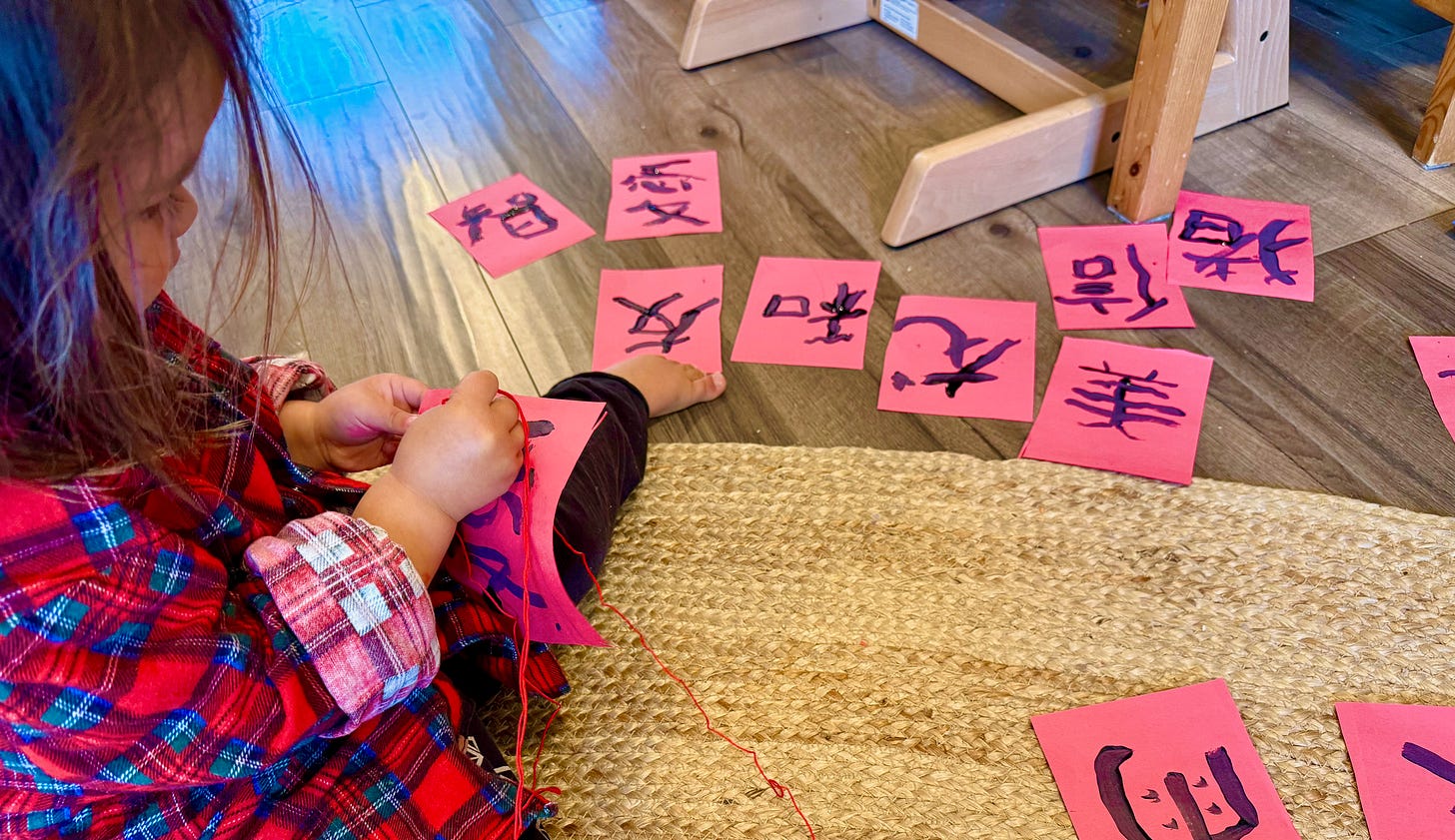
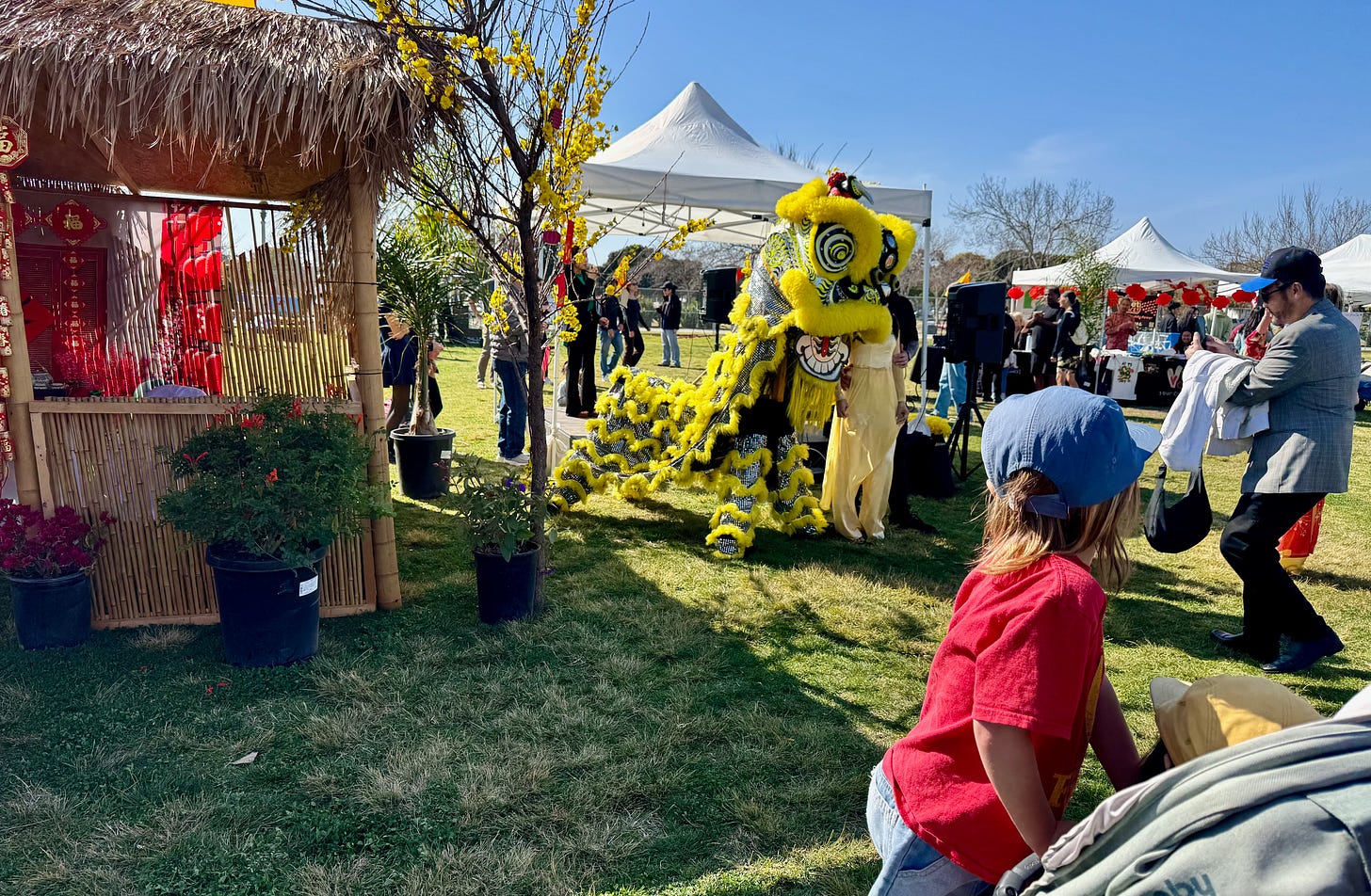
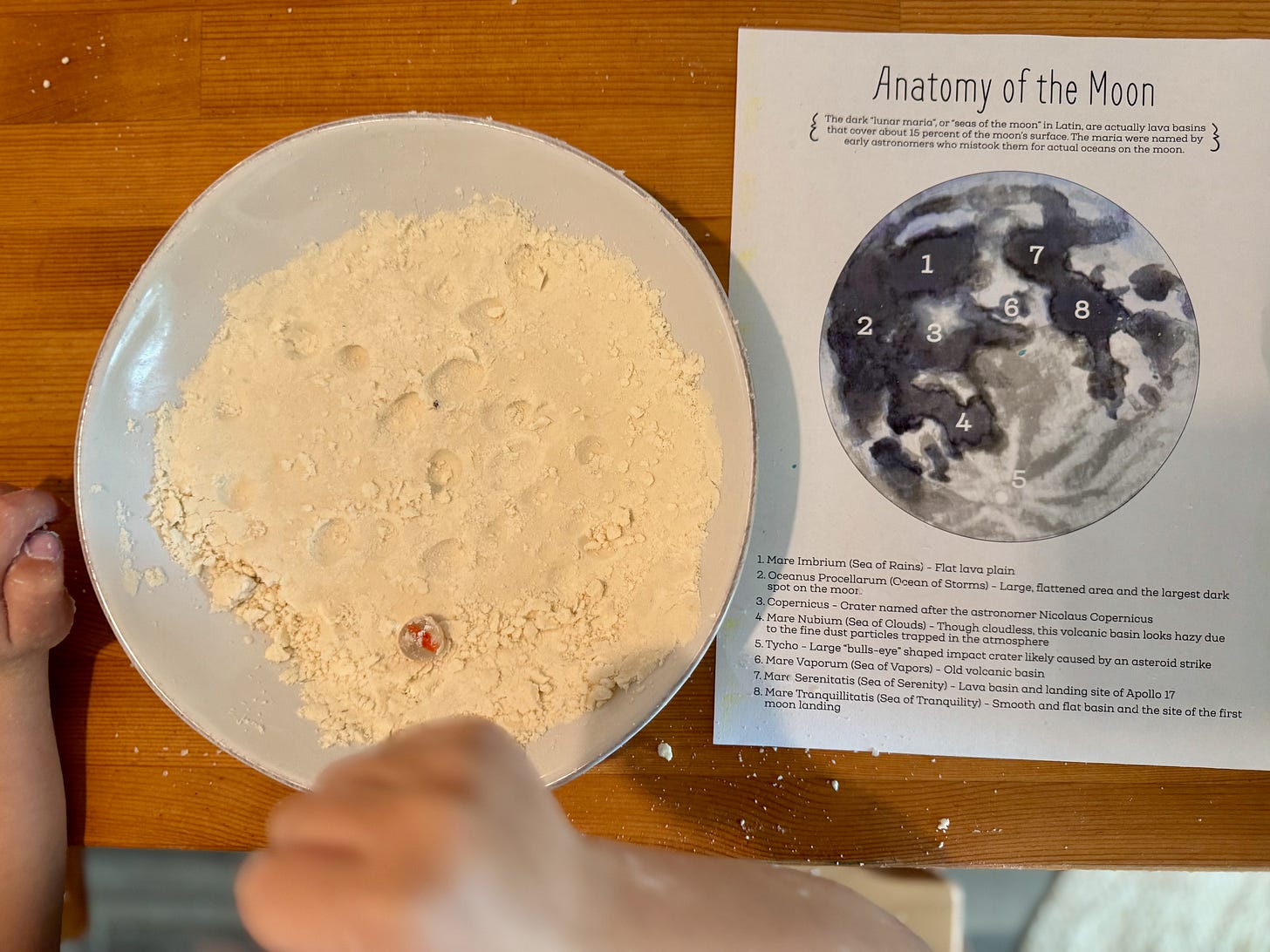

My father-in-law grew up calling it the Spring Festival, many people in the United States call it Chinese New Year, and the name Lunar New Year is inclusive of the many countries and cultures that celebrate this holiday. We call it all three!




